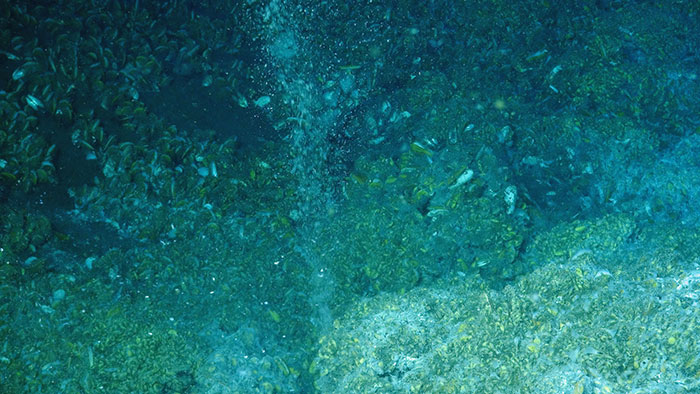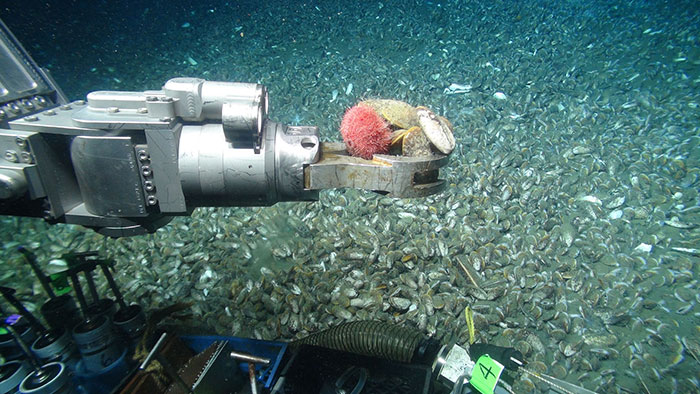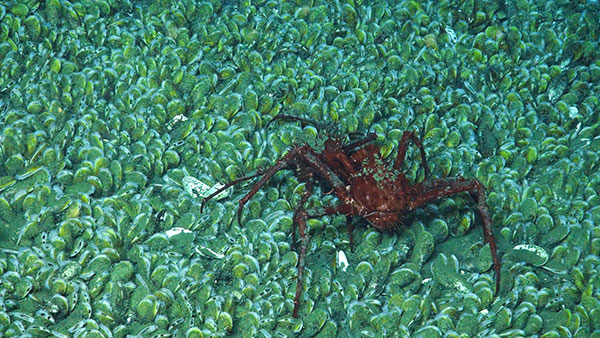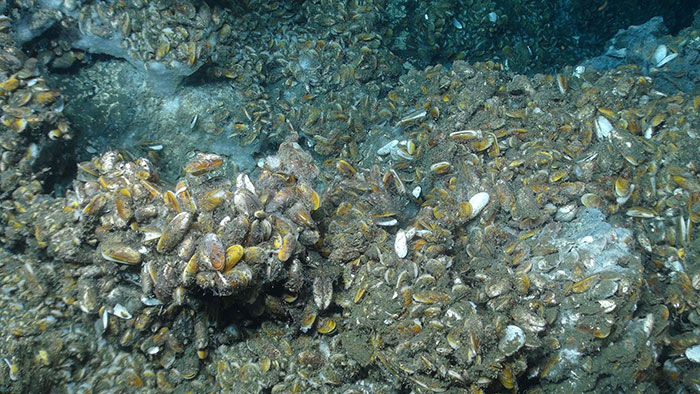
Photos: Unique Life Found at East Coast Gas Seep
Bubbles rising

Here are methane gas bubbles rise from the seafloor. These bubbles were originally noticed by NOAA Ship Okeanos Explorer in 2012. On May 8, 2013, the NOAA ship Ron Brown returned to the area to further investigate.
Collecting animals

The Ron Brown, and its ROV Jason, moved closer and found a gas seep with unique life. Here Jason collects a sea urchin and a few mussels from the expansive mussel bed with its manipulator arm.
Spider crab

A lithodid crab seen on the mussel bed at 1 mile (1.6 kilometers) beneath the surface.
Mussels at the gas seep

This mussel community was found on flat stretches of the seafloor as well as on rocks rising 3 meters (9 feet) or more off the ocean bottom.
Unidentified fish

This is an unidentified deep-sea fish, perhaps a relative of the genus Brotulas, resting among the mussels.
Get the world’s most fascinating discoveries delivered straight to your inbox.

